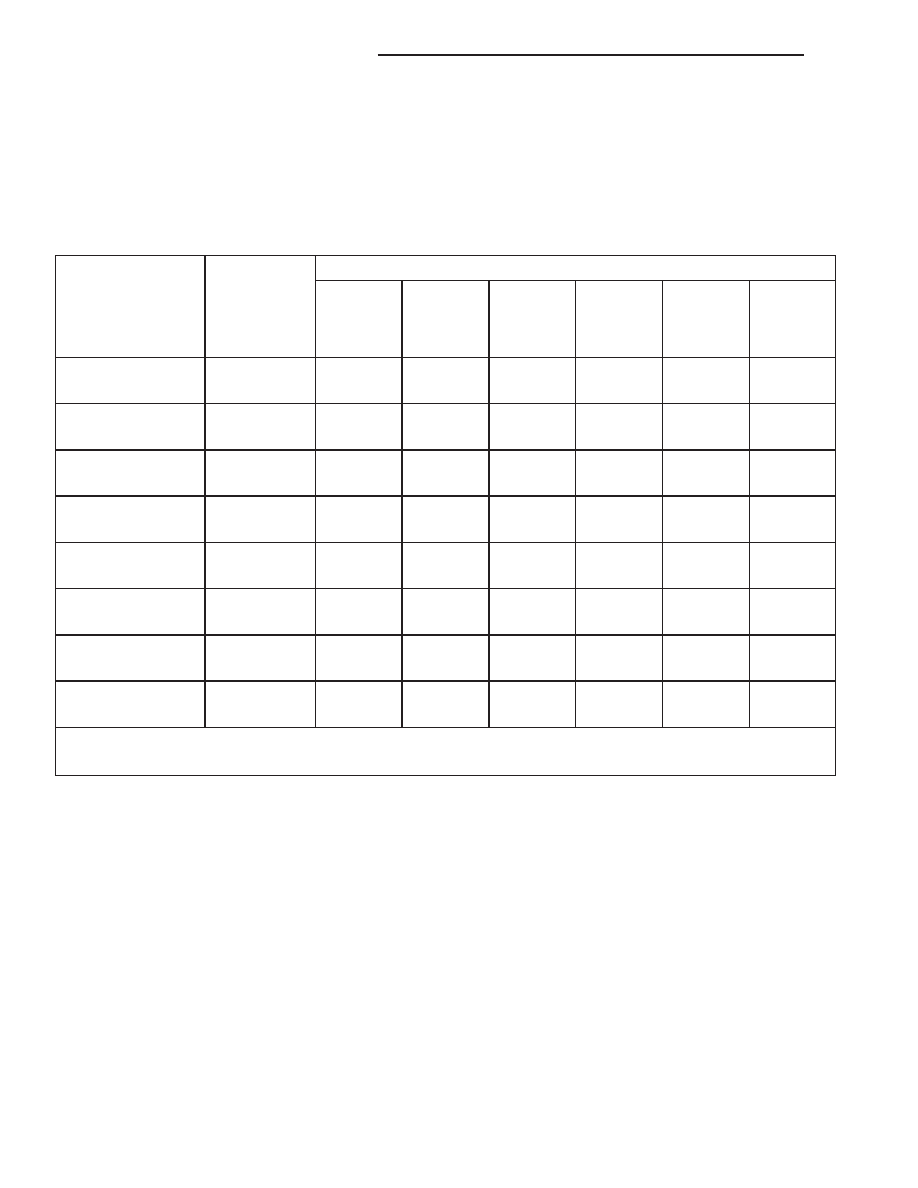Chrysler Town, Dodge Caravan. Manual - part 393

(3) Clutch circuit leaks are indicated if pressures
do not fall within the specified pressure range.
(4) If the overdrive clutch pressure is greater than 5
psi in Step 4 of Test Three, a worn reaction shaft seal
ring or a defective solenoid assembly is indicated.
(5) If the underdrive clutch pressure is greater
than 5 psi in Step 4 of Test Two A, a defective sole-
noid assembly or PCM/TCM is the cause.
PRESSURE CHECK SPECIFICATIONS
Gear Selector
Position
Actual Gear
Pressure Taps
Underdrive
Clutch
Overdrive
Clutch
Reverse
Clutch
Torque
Converter
Clutch
Off
2/4
Clutch
Low/
Reverse
Clutch
Park
*
PARK
0-2
0-5
0-2
60-110
0-2
115-145
0 mph
REVERSE
*
REVERSE
0-2
0-7
165-235
50-100
0-2
165-235
0 mph
NEUTRAL
*
NEUTRAL
0-2
0-5
0-2
60-110
0-2
115-145
0 mph
L
#
FIRST
110-145
0-5
0-2
60-110
0-2
115-145
20 mph
3
#
SECOND
110-145
0-5
0-2
60-110
115-145
0-2
30 mph
3
#
DIRECT
75-95
75-95
0-2
60-90
0-2
0-2
45 mph
OD
#
OVERDRIVE
0-2
75-95
0-2
60-90
75-95
0-2
30 mph
OD
#
OVERDRIVE
WITH TCC
0-2
75-95
0-2
0-5
75-95
0-2
50 mph
* Engine speed at 1500 rpm
# CAUTION: Both front wheels must be turning at the same speed.
DIAGNOSIS AND TESTING - CLUTCH AIR
PRESSURE TESTS
Inoperative clutches can be located using a series
of tests by substituting air pressure for fluid pressure
(Fig. 5) (Fig. 6). The clutches may be tested by apply-
ing air pressure to their respective passages. The
valve body must be removed and Tool 6056 installed.
To make air pressure tests, proceed as follows:
NOTE: The compressed air supply must be free of
all dirt and moisture. Use a pressure of 30 psi.
Remove oil pan and valve body. See Valve body
removal.
OVERDRIVE CLUTCH
Apply air pressure to the overdrive clutch apply
passage and watch for the push/pull piston to move
forward. The piston should return to its starting
position when the air pressure is removed.
REVERSE CLUTCH
Apply air pressure to the reverse clutch apply pas-
sage and watch for the push/pull piston to move rear-
ward. The piston should return to its starting
position when the air pressure is removed.
2/4 CLUTCH
Apply air pressure to the feed hole located on the
2/4 clutch retainer. Look in the area where the 2/4
piston contacts the first separator plate and watch
carefully for the 2/4 piston to move rearward. The
piston should return to its original position after the
air pressure is removed.
21 - 122
41TE AUTOMATIC TRANSAXLE
RS
41TE AUTOMATIC TRANSAXLE (Continued)